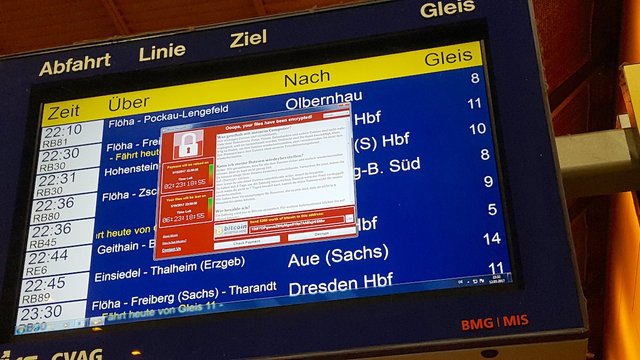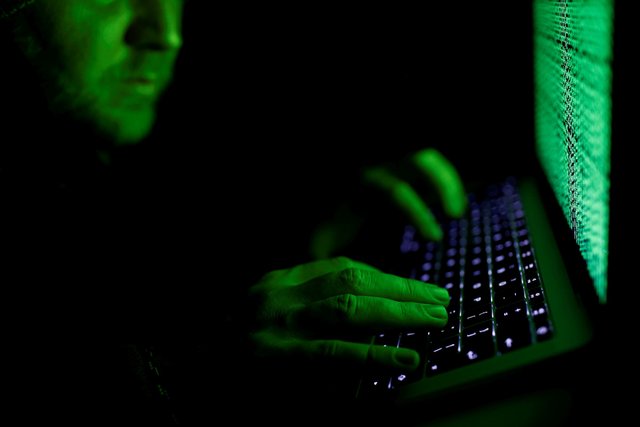The "accidental hero" who halted the global spread of an unprecedented ransomware attack by registering a garbled domain name hidden in the malware has warned the attack could be rebooted.

The ransomware used in Friday's attack wreaked havoc on organizations including FedEx and Telefónica, as well as the UK's National Health Service, where operations were canceled, X-rays, test results, and patient records became unavailable, and phones did not work.
But the spread of the attack was brought to a sudden halt when one UK cybersecurity researcher tweeting as @malwaretechblog, with the help of Darien Huss from the security firm Proofpoint, found and inadvertently activated a "kill switch" in the malicious software.
The researcher, who identified himself only as MalwareTech, is a 22-year-old from southwest England who works for Kryptos logic, a Los Angeles-based threat-intelligence company.
"I was out having lunch with a friend and got back about 3 p.m. and saw an influx of news articles about the NHS and various UK organizations being hit,"
"I had a bit of a look into that and then I found a sample of the malware behind it, and saw that it was connecting out to a specific domain, which was not registered. So I picked it up not knowing what it did at the time."
I picked it up not knowing what it did at the time.
The kill switch was hard coded into the malware in case the creator wanted to stop its spread. This involved a very long nonsensical domain name that the malware makes a request to — just as if it were looking up any website — and if the request comes back and shows that the domain is live, the kill switch takes effect and the malware stops spreading. The domain cost $10.69 and was immediately registering thousands of connections every second.
MalwareTech explained that he bought the domain because his company tracks botnets, and by registering these domains they can get an insight into how the botnet is spreading. "The intent was to just monitor the spread and see if we could do anything about it later on. But we actually stopped the spread just by registering the domain," he said. But the following hours were an "emotional rollercoaster."
"Initially someone had reported the wrong way round that we had caused the infection by registering the domain, so I had a mini freakout until I realized it was actually the other way around and we had stopped it," he said.
MalwareTech said he preferred to stay anonymous "because it just doesn't make sense to give out my personal information, obviously we're working against bad guys and they're not going to be happy about this."
He also said he planned to hold on to the URL, and he and colleagues were collecting the IPs and sending them off to law-enforcement agencies so they could notify the infected victims, not all of whom are aware that they have been affected.
'This is not over'
He warned people to patch their systems, adding: "This is not over. The attackers will realize how we stopped it, they'll change the code, and then they'll start again. Enable Windows update, update, and then reboot."
He said he got his first job out of school without any real qualifications, having skipped university to start a tech blog and write software.
"It's always been a hobby to me — I'm self-taught. I ended up getting a job out of my first botnet tracker, which the company I now work for saw and contacted me about, asking if I wanted a job. I've been working there a year and two months now."
But the dark knight of the dark web still lives at home with his parents, which he joked was "so stereotypical." His mum, he said, was aware of what had happened and was excited, but his dad hadn't been home yet. "I'm sure my mother will inform him," he said.
"It's not going to be a lifestyle change — it's just a five-minutes-of-fame sort of thing. It is quite crazy, I've not been able to check into my Twitter feed all day because it's just been going too fast to read. Every time I refresh it it's another 99 notifications."

Proofpoint's Ryan Kalember said the British researcher gets "the accidental hero award of the day." "They didn't realize how much it probably slowed down the spread of this ransomware."
The time that @malwaretechblog registered the domain was too late to help Europe and Asia, where many organizations were affected. But it gave people in the US more time to develop immunity to the attack by patching their systems before they were infected, Kalember said.
The kill switch won't help anyone whose computer is already infected with the ransomware, and it's possible that there are other variants of the malware with different kill switches that will continue to spread.
The malware was made available online April 14 through a dump by a group called Shadow Brokers, which claimed last year to have stolen a cache of "cyberweapons" from the National Security Agency.
Ransomware is a type of malware that encrypts a user's data and then demands payment in exchange for unlocking the data. This attack used a piece of malicious software called "WanaCrypt0r 2.0," or WannaCry, that exploits a vulnerability in Windows. Microsoft released a patch (a software update that fixes the problem) for the flaw in March, but computers that have not installed the security update remain vulnerable.
The ransomware demands users pay $300 worth of the cryptocurrency Bitcoin to retrieve their files, though it warns that the "payment will be raised" after a certain amount of time. Translations of the ransom message in 28 languages are included. The malware spreads through email.
"This was eminently predictable in lots of ways," Kalember said. "As soon as the Shadow Brokers dump came out everyone [in the security industry] realized that a lot of people wouldn't be able to install a patch, especially if they used an operating system like Windows XP [which many NHS computers still use], for which there is no patch."
Security researchers with Kaspersky Lab have recorded more than 45,000 attacks in 74 countries, including the UK, Russia, Ukraine, India, China, Italy, and Egypt. In Spain, major companies including the telecommunications firm Telefónica were infected.
By Friday evening, the ransomware had spread to the US and South America, though Europe and Russia remained the hardest hit, according to the security researchers Malware Hunter Team. The Russian interior ministry says about 1,000 computers had been affected.
Hi! I am a robot. I just upvoted you! I found similar content that readers might be interested in:
http://en.farsnews.com/newstext.aspx?nn=13960224000255
Downvoting a post can decrease pending rewards and make it less visible. Common reasons:
Submit